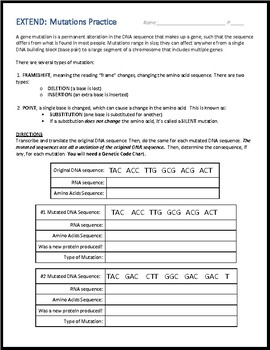
Extra Credit > Biology > genetic mutation projectBegin with an introduction about:DNA and the human genome- What is a genetic mutation
- What causes genetic diseases
Then choose a genetic disorder or if you know of another one just run it by me first. Here are some choices you can choose from.Lou Gehrig’s Disease (ALS)
Here are some links that have a greater selectionhttp://www.kumc.edu/gec/support/ http://learn.genetics.utah.edu/content/disorders/whataregd/ http://dir.yahoo.com/Health/Diseases_and_Conditions/Genetic_Disorders/ Once you've decided let me know so we don't get too many presentations on the same topic.
Then address the following in order:What is the name of the disorderHow is the disorder diagnosed? How does a person get the disorder? Is it a DNA mutation or Is it inherited?Find out all of the main signs and symptoms of the disorder. What is it like to have this disorder?What types of treatment (if any) are available for the disorder?Plus any other information that you feel is important/interesting for others to know about the genetic disorder.
Then add a section about how mutations can be favorable! - Describe how mutations can be beneficial
- Give examples of successful mutations
- Include pictures to show examples
Extra Credit: (6th hour must choose one of the following)- What is gene therapy?
- What is your thoughtful opinion about Gene Therapy (benefits / risks)?
- How is what you've learned about the Nazi's in World War II in your Social Studies class, and what you've learned about heredity in science relate to you and the world today?
Grading Break-downIncludes ALL required information listed above; paraphrased in an organized manner 50 pointsIncludes 10 relevant pictures or videos and is visually pleasing (it looks good) 40 pointsIncludes a reference page and proper grammar (spelling, punctuation, etc) 10 pointsTotal 100pts |
|

5 Nasal Mutation Practice Sindarin Lessons Pdf
Exercise 5 - Nasal mutation practise (Lessons 8, 9 & 10) You will often find yourself needing to use this, so it's good to get in the habit of practicing it. This is also some further plural practice for you, as remember that when we're using 'in' it means there's more than one of whatever we're talking about!
5 Nasal Mutation Practice Sindarin Lessons Questions
- Exercise 5 - Nasal mutation practise (Lessons 8, 9 & 10) You will often find yourself needing to use this, so it's good to get in the habit of practicing it. This is also some further plural practice for you, as remember that when we're using 'in' it means there's more than one of whatever we're talking about!
- Lesson Background and Concepts for Teachers (Slide 4) Types of Mutations: Mutations can be classified several different ways. In this lesson, we will focus on sorting mutations by their effects on the structure of DNA or a chromosome. For this categorization, mutations can be organized into two main groups, each with multiple specific types.


